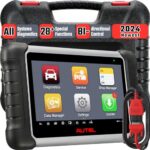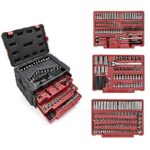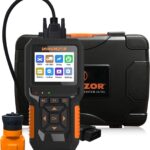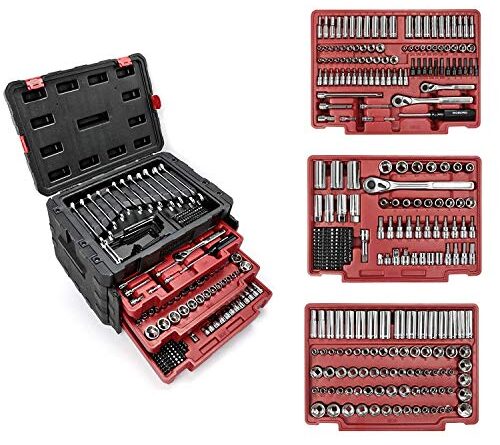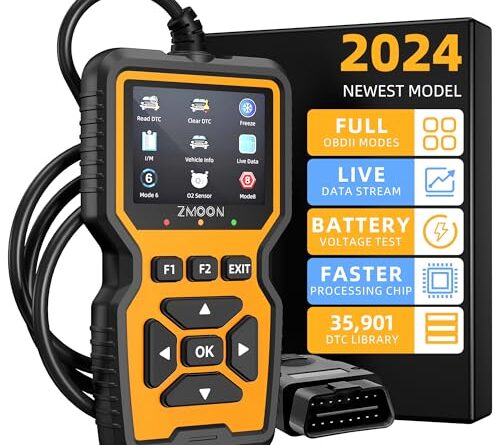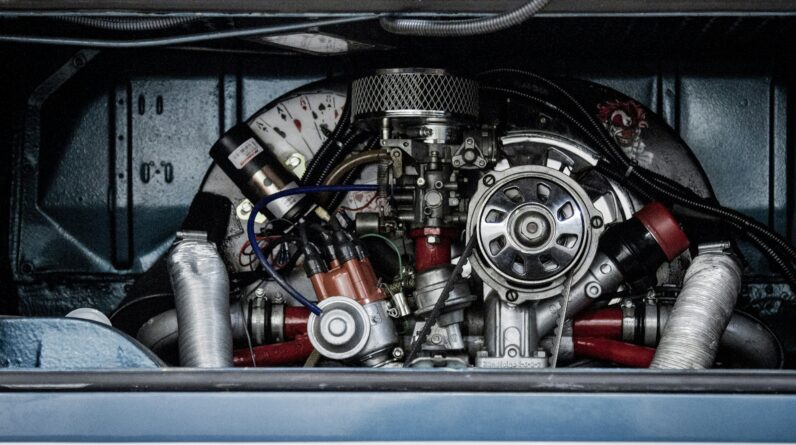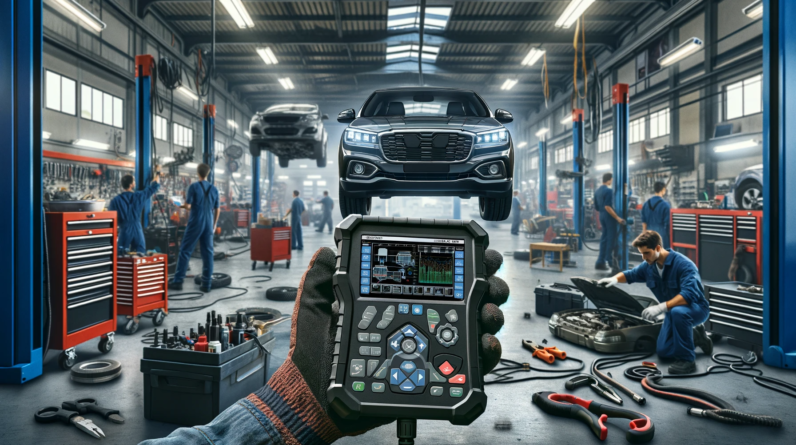
Disclaimer: This post may contain affiliate links. As an Amazon Associate, we earn from qualifying purchases.
Have you ever wondered about the distinction between a scan tool and OBD? When it comes to diagnosing vehicle issues, it’s essential to understand the difference between these two tools. While the OBD (On-Board Diagnostics) is a standardized system that monitors various components of a car and detects malfunctions, a scan tool is a device that can connect to the OBD system to retrieve and interpret diagnostic trouble codes.
In this post, we will explore the dissimilarities between these two tools, shedding light on their functionalities and benefits for both car owners and mechanics. So, let’s dive in and unravel the world of scan tools and OBD to enhance our understanding of vehicle diagnostics!
Definition of Scan Tool and OBD
Scan Tool
A scan tool, also known as a diagnostic scanner, is a device used by automotive technicians to gather information from the onboard computer systems of vehicles. It is a handheld device that connects to the vehicle’s onboard diagnostics (OBD) port and provides real-time data, diagnostic information, and troubleshooting capabilities.
OBD
OBD, which stands for Onboard Diagnostics, is a standardized system in vehicles that monitors and controls various components and systems. It is a computer-based system that collects and stores information related to the vehicle’s performance, emissions, and other important parameters. OBD is implemented in all modern vehicles and is mandated by law in many countries.
Purpose
Scan Tool
The primary purpose of a scan tool is to diagnose and troubleshoot vehicle issues. It allows technicians to read and interpret the information provided by the vehicle’s onboard computer systems. By connecting a scan tool to the OBD port, technicians can retrieve diagnostic trouble codes (DTCs), view sensor data in real-time, and perform various tests and functions to identify and resolve problems.
OBD
The purpose of OBD is to ensure that vehicles meet emissions standards and to help diagnose and report any malfunctions or issues. OBD constantly monitors various systems and components, such as the engine, transmission, and emissions control systems, and alerts the driver or technician about any faults or problems through the use of diagnostic trouble codes. OBD helps in identifying issues early on and allows for timely repairs and maintenance.
Usage
Scan Tool
Scan tools are primarily used by automotive technicians and professionals who have a deep understanding of vehicle systems and diagnostics. They are used in automotive repair shops, dealerships, and other service facilities to diagnose and resolve complex issues.
However, some scan tools are also designed for use by car enthusiasts and DIY enthusiasts who want to perform basic diagnostics and maintenance on their vehicles.
OBD
OBD is used by both technicians and drivers alike. When a vehicle’s check engine light comes on, it often indicates a fault detected by the OBD system. In such cases, drivers can use a basic code reader, which is a simple form of a scan tool, to retrieve the diagnostic trouble codes and get a general idea of the issue.
This information can then be shared with a technician for further diagnosis and repairs.
Functionality
Scan Tool
Scan tools offer a wide range of functionalities to help diagnose and troubleshoot vehicle issues. They can read and clear diagnostic trouble codes (DTCs), view live data from various sensors and modules, perform component and system tests, reset service indicators, and even reprogram certain modules in the vehicle’s computer system.
Advanced scan tools may also provide additional features such as graphing capabilities, wireless connectivity, and access to manufacturer-specific systems.
OBD
The OBD system primarily functions as a monitoring system for the vehicle’s performance and emissions. It constantly reads data from various sensors and components, checks for any malfunctions, and stores the diagnostic trouble codes for reference. OBD also enables the communication between the vehicle’s onboard computer system and external devices, such as scan tools, allowing for diagnostics and troubleshooting.
Compatibility
Scan Tool
Scan tools come in different variations and levels of sophistication, which may affect their compatibility with different vehicles. Some scan tools are generic and can work with most vehicles that have OBD ports, while others are specifically designed for certain vehicle makes and models.
The compatibility of a scan tool depends on factors such as the protocols and communication standards supported by the tool and the vehicle’s onboard computer system.
OBD
OBD is generally standardized across all modern vehicles, thanks to regulations such as OBD-II. This means that any OBD-II compliant vehicle should be compatible with any scan tool or device that supports the OBD-II protocol.
However, it is important to note that there are multiple generations and variations of OBD, such as OBD-I, OBD-II, and the upcoming OBD-III, which may have different communication protocols and connector types.
Connection
Scan Tool
Scan tools are connected to the vehicle’s OBD port, which is usually located under the dashboard or near the driver’s side. The connection is made using a cable or wire that plugs into the OBD port and interfaces with the scan tool. Some scan tools may also offer wireless connectivity options, such as Bluetooth or Wi-Fi, allowing for a more flexible and convenient connection.
OBD
The OBD port is a standardized connector located in the vehicle’s cabin, typically near the driver’s side. It provides a physical interface through which the vehicle’s onboard computer system can communicate with external devices, such as scan tools. The OBD port uses a specific connector type, such as the OBD-II connector, which is a 16-pin connector with a specific pinout configuration.
Data Reading
Scan Tool
Scan tools can read a wide range of data from the vehicle’s onboard computer system. This includes information such as engine RPM, vehicle speed, fuel system status, coolant temperature, oxygen sensor readings, and various other sensor data. Scan tools can also display freeze frame data, which captures the values of various parameters at the time of a fault occurrence, aiding in troubleshooting and diagnosis.
OBD
OBD constantly collects data from various sensors and components in the vehicle and stores it in the form of diagnostic trouble codes (DTCs). These codes can be read and interpreted by a scan tool to provide information about the specific issue or fault that the vehicle is experiencing.
The data collected by the OBD system helps in identifying problems, monitoring the vehicle’s performance, and ensuring compliance with emissions standards.
Diagnostic Capabilities
Scan Tool
Scan tools offer extensive diagnostic capabilities to identify and resolve vehicle issues. They can perform tests and functions such as reading and clearing DTCs, viewing live sensor data, running system checks, performing component tests, resetting service indicators, and even accessing advanced functions like programming and adaptation.
Advanced scan tools may also provide guided diagnostics and step-by-step procedures for troubleshooting specific issues.
OBD
OBD itself does not perform diagnostics but enables diagnostics by providing access to the data collected by the onboard computer systems. It acts as a gateway for scan tools and other diagnostic devices to retrieve diagnostic trouble codes and other relevant information.
OBD ensures that the diagnostics process is standardized and allows for consistent communication and compatibility between vehicles and diagnostic tools.
Diagnostic Codes
Scan Tool
Scan tools can retrieve and display diagnostic trouble codes (DTCs) stored in the vehicle’s onboard computer system. DTCs are alphanumeric codes that provide information about specific faults or issues. They can indicate anything from a simple sensor malfunction to a complex system failure. By reading and interpreting DTCs, scan tools help technicians pinpoint the root cause of a problem and take appropriate corrective measures.
OBD
OBD constantly monitors various systems and components in the vehicle and generates diagnostic trouble codes whenever a fault is detected.
These codes are stored in the vehicle’s computer system and can be retrieved and interpreted using a scan tool or code reader. The diagnostic trouble codes provide a starting point for diagnosis and help technicians and drivers understand the specific problem that needs attention.
Conclusion
In conclusion, a scan tool and OBD are both essential tools in the field of automotive diagnostics. While OBD serves as the onboard monitoring and reporting system in vehicles, a scan tool acts as the interface between the OBD system and technicians or drivers.
Scan tools provide advanced diagnostic capabilities, help read and interpret diagnostic trouble codes, and offer a wide range of additional functions. OBD ensures standardization and compatibility in diagnostics, allowing for efficient and effective troubleshooting.
By understanding the difference between scan tools and OBD, you can gain a better appreciation for the tools and technologies that help keep our vehicles running smoothly.






